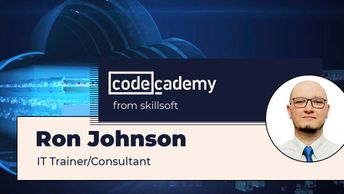IT Skills Cloud Computing and Virtualization CloudOps Migrating to Serverless: The Anatomy of Serverless
Implementing serverless solutions allows developers to move away from servers and infrastructure concerns and focus on building efficient applications. This course will acquaint you with the considerations and use cases for serverless implementation and the features and architectures of common serverless computing platforms.
You'll recognize attributes of serverless systems, the concept of Function as a Service (FaaS), and the role of programming models in selecting serverless architectures and runtimes. You'll also examine the features of different serverless services provided by Amazon Web Services (AWS), serverless computing and implementation costs, and use cases for multi-cloud serverless solutions.
After finishing this course, you'll be able to identify the concerns, considerations, and costs related to serverless implementation and set up a development environment for building serverless applications.
You'll recognize attributes of serverless systems, the concept of Function as a Service (FaaS), and the role of programming models in selecting serverless architectures and runtimes. You'll also examine the features of different serverless services provided by Amazon Web Services (AWS), serverless computing and implementation costs, and use cases for multi-cloud serverless solutions.
After finishing this course, you'll be able to identify the concerns, considerations, and costs related to serverless implementation and set up a development environment for building serverless applications.
| Objectives |
|---|
Migrating to Serverless: Implementing Serverless Solutions
|


